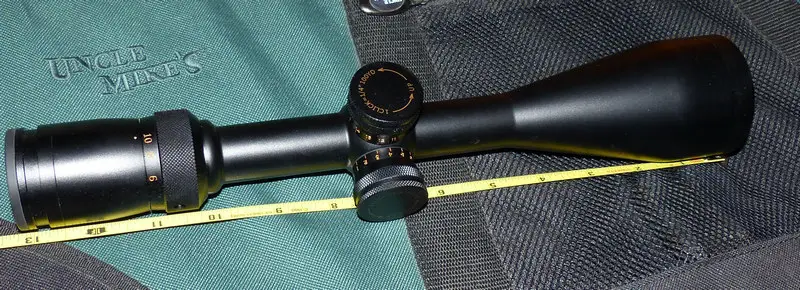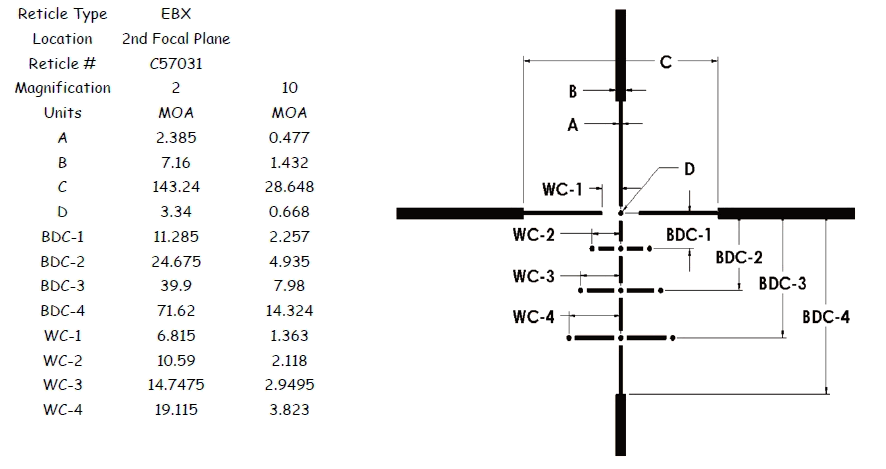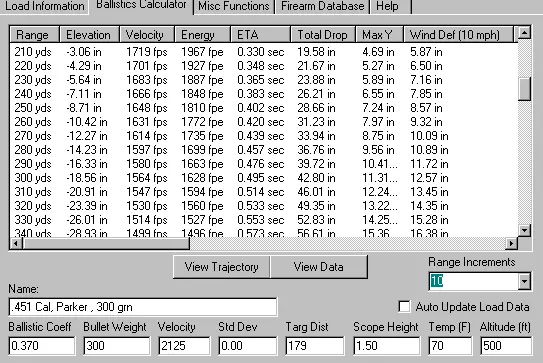


Weaver Super Slam 2-10 x 50 EBX Riflescope Part One

The five-times zoom range of the Weaver Super Slam makes it a versatile hunting scope. This Super Slam, Model #800325, is the 50mm objective version of the series; the 42mm objective model was previously tested. This model also has Weaver's "Enhanced Ballistic X" reticle.
Most of the weight in a riflescope is from the glass: this unit is a beefy 21.9 oz. scope, stated to be 14.09 inches long (actually about 13-1/4 in.), with a 48.4 - 9.7 ft. field of view at 100 yards. The exit pupil is published at 10.5 - 4.4 mm. It has a street price of about $525, mid-range in the 2014 market and about the limit on what many hunters will invest in a quality riflescope.
The basic features include:
Fully
multi-coated lenses with extra hard coating on exterior lenses
Powerful 5 times magnification
Waterproof / shockproof / fogproof
Reset-to-zero, pull-up turrets
Argon purged tube to eliminate internal fogging
It is a bright, clear scope, noticeably brighter to my eyes than the 42mm model when cranked up to 10 power. The pull-up turrets are easy to use, and the adjustments are positive and precise. This Super Slam has generous eye-relief: stated as 4.13 inches.

Above: The EBX etched reticle isn't explained well at all on the Weaver site, so here is a look at what it means expressed in MOA at 2x and 10x. MOA is 1.047 inches @ 100 yards: rounding it to one inch per hundred yards is more than adequate for hunting purposes.
THE RETICLE METHOD
I'll offer a real-world approximation of how you'd use this reticle in a longer range muzzleloading application, using a Barnes 290 T-EZ (.223 G1 BC) at a moderate 2000 fps. This load has a 6 inch kill MBR of 188 yards: that is sighted in about 3 inches high at 100 yards. Get within 190 yards of your animal, center of the body hold, and go pick him up.
At 190 yards, line of sight drop is -3.32 inches, so you'd crank to 10x and use BDC-1. For BDC-1, 1.9 x 2.257 = 4.2883. Now, rather than being 3.32 inches low, you are about .9683 in. high. Pull the trigger and go pick him up. At 220 yards, with no hold-over, you'd be -8.29 inches. However, 2.2 x 2.257 = 4.9654. So, that is the limit of BDC-1, which puts you -3.3246 inches. This gives you a very precise aiming point, extending your range by 30 yards very quickly.
The combinations are limitless. If we sub in a 300 grain Parker Match Hunter at 2125 fps, our MPBR is already 210 yards where POI is -3.06 inches. In that case, BDC-1 takes us to +1.6797 inches at 210 yards, and we are good to go to 250 yards with ease, for POI is now -3.0675 inches. Bump the 300 grain Parker Match Hunter to 2300 fps, MPBR is now 228 yards; BDC-1 takes us to 270 yards with just the one BDC-1 holdover point, where impact is now --2.4561 inches. At 300 yards, still use BDC-1, hold on his back. Impact is now about 7 inches low (-6.979 inches) and that's called "what's for dinner."
With a center-fire, using the far flatter .30 caliber (and similar) trajectories, the first hold-over point takes you out dramatically farther. The "old" .270 Winchester, with 130 grain Hornady Superformance Interbond cartridges, is a 309 yard MPBR rifle. BDC-1 in that case takes you to about 400 yards.
THE MOA METHOD
However, that is just one way to use this scope. The pull-out turrets are marked in gold, 0-14, meaning up to 14 MOA. After initial sight-in, you can re-set them to zero. The clicks are positive, 1/4 MOA clicks, but with cold or gloved hands you might want to just turn them to compensate for the drop as indicated by the gold markings. In this case, the approximate 1 inch at 100 yard applies, so this has nothing to do with the magnification setting of the scope.

Let's assume you are using the Parker Match Hunter at 2125 fps, set for a 6 inch kill MPBR of 209 yards, as shown above. Your animal is at 300 yards: 18.56 inches of drop. A counter-clockwise twist of the turret to "6" approximates 6 MOA of elevation, roughly 18 inches at 300 yards. You are done, as far as elevation correction. The rest is accounting for wind and animal movement. You can create your own personal ballistic profile for essentially any load, and naturally confirm it by actual practice shooting prior to the hunt.
Optically, this scope compares favorably with several of my favorite hunting scopes: the Sightron SII Big Sky 3-12 x 42, the Bushnell 6500 2.5-16 x 42mm, and the now apparently discontinued Burris 3-12 x 50 Black Diamond. The 50mm objective of the Black Diamond makes it a 21 oz. scope as well. If you want a bright scope after sunset at 10x, there is no substitute for a large exit pupil, and that means a 50mm objective. This scope is brighter at dusk than all the aforementioned scopes, except for the Black Diamond which is roughly equivalent @ 10x.
Field results to follow in part two.
Copyright 2014 by Randy Wakeman. All Rights Reserved.

Custom Search

